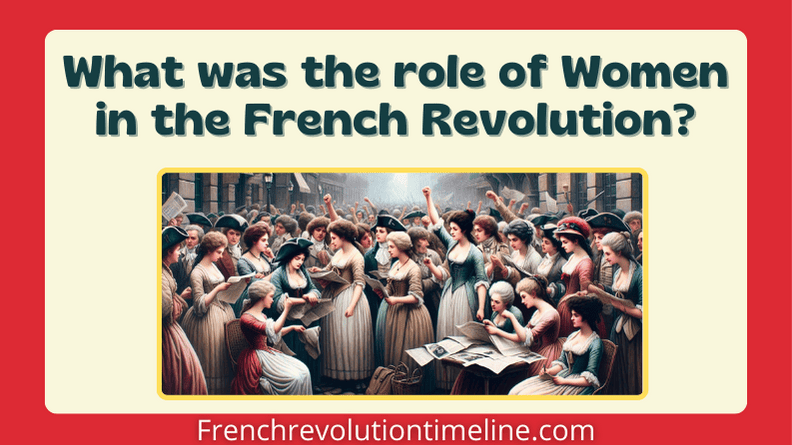All the 3 Stages of the French Revolution
First stage of the French Revolution (1789-1791)
States-General:
The States-General of 1789 was the last gathered by the Old Regime. It took place on May 5, 1789, in Versailles after a call from King Louis XVI to find a solution to the severe financial crisis that France was facing.
Finally, the sovereignty of the French State was represented by the nobility, the clergy, and the people. The latter had more representatives than the rest, who would later be supported by many deputies from the nobility and the church, following the advice of the priest Sieyès.
In this way, the National Assembly was established on June 17, 1789, which meant an unprecedented legal change.
National Assembly:
Once the National Assembly was established on June 17, 1789, the assembly members passed the Declaration of the Rights of Man and the Citizen as a first measure on August 26 of that same year.
However, King Louis XVI prohibited the representatives of the Third Estate from entering the room where they had met days before. Though, the members of the Assembly found another meeting place in Versailles, the Tennis Court, where on June 20, they swore the creation of a new Constitution for France.
Afterward, on June 27, the king gave in to such a situation. On July 9, the Assembly has renamed the National Constituent Assembly, where the first French Constitution was approved on September 3, 1791.
National Constituent Assembly:
The Assembly was made up of three large groups as follows:
- On the right, the old aristocratic, conservative, and privileged classes were settled.
- A moderate group of followers of Minister Jacques Necker formed the Royalist Democrats party.
- On the left were most of the assembly members represented by the most famous personalities of the bourgeoisie (Mirabeau, Lafayette, Billy) and the popular classes (Robespierre, Jacobins, Cordeliers, among others).
Its purpose was to decentralize power, reorder the administration of justice, consider the new territorial division, regulate citizens’ equality regarding taxes, and strengthen internal trade; the Catholic Church began to depend on the State once its patrimony was nationalized, among others.
Storming of Bastille:
The storming of Bastille took place on July 14, 1789. This was the starting point of the French Revolution and the end of the Old Regime. It was a jail where all those who opposed the monarchy’s abuses were sent.
However, the removal of finance minister Jacques Necker on July 11, 1789, is considered the driving force behind the storming of Bastille, who would have shown great interest in solving financial problems and who also showed interest in the Third Estate.
Faced with such a situation, the Liberals feared that the Conservatives would close the Constituent Assembly with the support of the royal troops. For this reason, a crowd of people gathered in Paris and fought continuously until July 14, the day they took the Bastille, and that space became a symbol of the Old Regime.
In this way, the Revolution spread throughout the rest of France. On August 4, 1789, the National Constituent Assembly approved eliminating the levy, the abolition of feudalism, among other agreements, to make way for social equality regarding the payment of taxes and access to public office and penalties. It was thus that the nobility and the clergy lost their privileges.
Constitution of 1791:
The new National Constituent Assembly filled the legislative function of drafting and declaring the Constitution of 1791, a monarchical tendency in which the division of powers was exposed: Legislative, Executive (exercised by the king), and Judicial.
Flight of King Louis XVI and his family:
Considering the Revolution’s course, King Louis XVI and his family decided to escape abroad to attack the revolutionary movements. They had previously settled allies with the Austrian and Prussian monarchies.
However, they were caught in Varennes on June 21, 1791, and returned to Paris, where they remained in keeping until later King Louis XVI returned to his executive position as monarch. This event urged the flight of many aristocrats and clergy. It also radicalized an anti-monarchical sentiment.
Second stage of the French Revolution (1792-1704)
End of the monarchy (1791-1792):
The constitutional monarchy established under the regulations of the Constitution of 1791 was affected by internal disputes in favor of the Revolution and by external threats to reinstate the absolute monarchy by Austria and Prussia.
Likewise, everyday tensions were more marked between political clubs, such as the Jacobins, the rope makers, and Girondists, even with the conservative bourgeoisie. After this political, social, and financial crisis, the constitutional monarchy did not fulfill a year of function.
Therefore, the Assembly was hostile and declared war on Austria and Prussia. Amid such social upheaval, the Assembly ceased the executive functions of King Louis XVI on August 10, 1792, when the Tuileries Palace was invaded.
Likewise, later elections were called by universal suffrage, and on September 20, 1792, a new parliament was established known as the National Convention, which ended the monarchy and established the Republic.
On January 17, 1793, King Louis XVI was sentenced to death for conspiring against the people, and on the 21st, he was beheaded in public. Several days later, his wife, Queen Marie Antoinette, was executed.
Republican Convention (1792-1794):
The new French Republic began under the control of the Girondists. It was described by facing one of the most challenging stages in which various anti-republican confrontations, the struggle for power, and facing a robust European coalition against what occurred in France, which led to the formation of the French national army.
Later, the radicalized Jacobins led by Maximilien Robespierre, among others, came to power, and a period known as the Reign of Terror was established between 1792 and 1794 due to the indiscriminate use of the guillotine. At this stage, a new French Constitution was published.
However, in 1794 Robespierre’s popularity waned, and a popular revolt arose that overthrew him.
Third stage of the French Revolution (1795-1799):
The bourgeoisie returned to power, and a third Constitution was drawn up on August 17, 1795, which established the Directory, a type of government adopted by the French First Republic, more moderate and that left behind the radical position of the Jacobins.
However, France was still encountering a severe economic crisis and political and social instability. This led to the formation of a second European coalition against France. At that time, General Napoleon Bonaparte returned from Egypt upon receiving a call from the members of the Directory.
End of the French Revolution
Napoleon Bonaparte was recognized as one of the most critical figures in ending the French Revolution.
On November 9, 1799, a Brumaire coup was carried out, led by Bonaparte, which placed him in power, after which he ended the French Revolution.
This is how the destiny of France changed; from 1799 to 1815, Napoleon abolished the Directory and ruled as First Consul and later as emperor, expanding his nationalist and equality ideal throughout Europe and the rest of the world. Likewise, Bonaparte managed to achieve political, economic, and social stability in France.
Three Stages/Phases of French Revolution Infographic Chart
The French Revolution happened in three different stages that have presented below picture.

Hope you got to know the three phases or you can say three stages of the French revolution.




